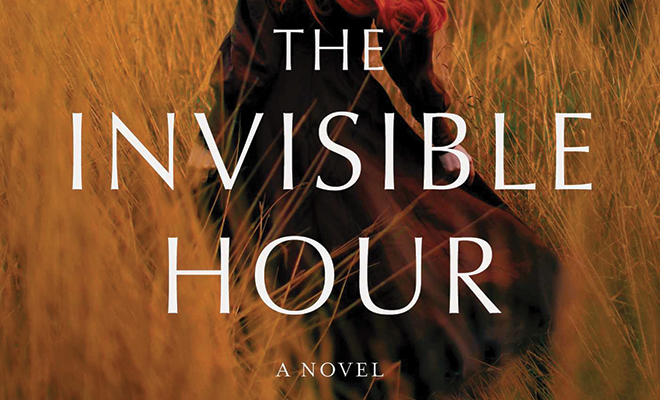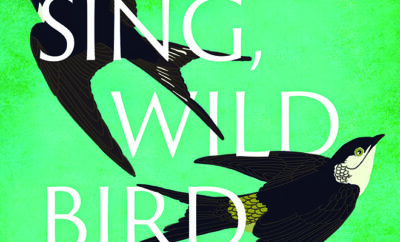
The Invisible Hour by Alice Hoffman
Fans of Alice Hoffman’s books will agree with Kristin Hannah’s back cover blurb. “A rich, immersive magical reading experience. This beautiful novel is about the stories women tell each other and the ones that save us, about the peril and price of motherhood, and the difficulties women have faced throughout history in controlling their own fates.”
These topics and the discussion of restricting access to books couldn’t be more timely. Ivy Jacobs grew up on Beacon Hill, Boston, in an enclave of Greek Revival houses surrounded by a park and garden, all owned by the elite families who lived there. Yet she never felt comfortable there. She was intelligent, a great reader, yet somewhat rebellious and unmanageable. A brief relationship with a Harvard student who refused to take responsibility for the pregnancy that resulted and parents who expected Ivy to give up her baby for adoption sent her into despair. In Harvard Square she met Kayla, who was headed for western Massachusetts and a community outside Blackwell, Massachusetts, where “people were respected for who they were and not expected to be who their families wanted them to be. They weren’t judged and they shared all they had.”
That all sounded idyllic to a desperate teenager, naïve to the ways of the world. Very wrong, though.
The cult leader was a former convict named Joel Davis, who took in Ivy, alluring and beautiful, and married her. Of course, the Community was not what it seemed, and Joel’s personality unfolded in cruel rules enforced in the community.
But Ivy’s daughter, Mia, was born and Ivy did her best to find happiness in the Community. At 15, Mia discovered the library in Blackwell, sneaking from the market where the farmers sold their produce. Inside, she discovers an old, moth-eaten book with a brown cover and gold letters. Within is an inscription: “To Mia, If it was a dream, it was ours alone and you were mine.”
The librarian, Sarah Mott, recognizes Mia as a girl from the Community. “She could tell that Mia lived up at the farm because of her braided hair and her clothing, modest gray garments and black work boots. She’d heard that books weren’t allowed at the farm, and didn’t that say just about everything? In a place where books were banned there could be no personal freedom, no hope, and no dreams for the future…Turn someone into a reader and you turn the world around.” Sarah gives Mia a library card.
And Mia becomes a reader. Shakespeare, Emily Dickinson, Jane Austen, devouring books. Life in the Community deteriorates. She finds the magic that is created in Shakespeare’s works, particularly Henry IV Part 1: “We have the receipt of fern-seed, we walk invisible.” As her longing to leave the Community grows, she plans her escape, desperately trying to convince her mother to escape with her. But tragedy occurs.
In the library, Mia discovers all the magic of fiction, nonfiction and The Scarlett Letter, one of the books she smuggles out of the library. In its pages she finds a story comparable to the life she is living, one that gives her reason to go on living. “Whether or not the inscription was directed to her, she felt as if the author knew her, and was speaking directly to her, for the tale he told of the Puritans and the story of life in the Community were so alike. In that moment, she felt closer to him than she had ever felt to anyone.”
Mia hides the volume in her special hiding place, separate from the many other hidden books she has borrowed from the library. After dinner that night, she is confronted by Joel. ‘“Is this how you repay my kindness?’” [My aside: What kindness?] Joel asked in his dark, quiet voice. It was the voice he used right before he punished someone, soft and dangerous. ‘“With such shameful behavior?”’ Her books have been discovered. She is locked in the barn, to be branded the next morning with the letter A, acts of wickedness, breaking one of the Community’s rules.
No more spoilers.
Hoffman’s prose and literary technique are, as always, flawless. I read and reread The Invisible Hour, finding more tiny details the second time. Hoffman uses various motifs to foreshadow and set mood. The setting of western Massachusetts is rife with historical and agricultural reminders of life’s continuity. And there’s always an element of magic in Hoffman’s writing and her characters’ belief in magic, good and evil. Mia is no exception in the list of memorable personalities created since 1977; she is an exceptionally positive person who looks for the best in the world.
If you have an hour or two, reread The Scarlet Letter and ruminate on Hawthorne’s lessons for us.







